The gleam of sunlight reflecting off the ice. The wonder of a frozen waterfall standing still like a moment arrested in time. The dissonance of a steaming hot spring surrounded by frozen ground. There’s something about icy landscapes that is both intimidating and irresistibly beautiful. Add to the scenery the silence of winter and the briskness of the air, and a visit to a magical frozen waterscape is one you’ll long cherish. These are our favorite frozen landscapes to savor the quiet and put your camera to work.
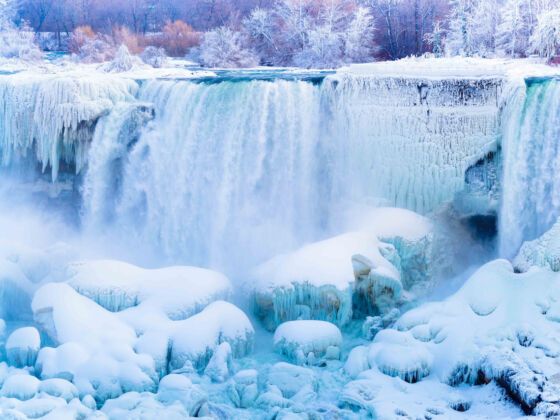
The Most Beautiful Frozen Waterscapes in the US to Witness This Winter
1. Apostle Islands National Lakeshore, Wisconsin
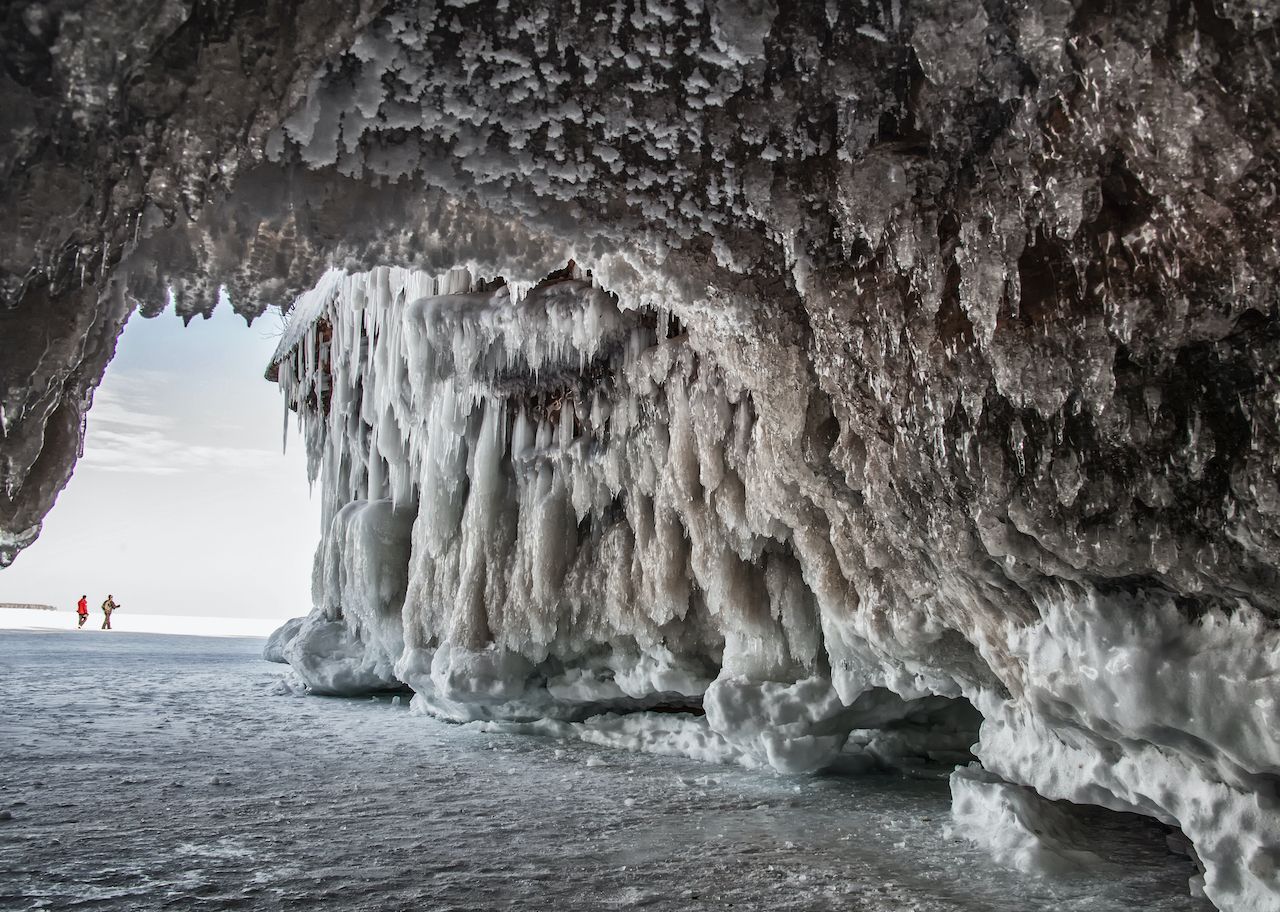
Photo: critterbiz/Shutterstock
Twenty-two sandstone islands carved out of Lake Superior, the Apostle Islands of Wisconsin are ultra-scenic in the warmer months, blues and greens reminiscent of the Caribbean. But come winter, the boreal-forested sea cliffs freeze, and the lapping waters eventually form ice caves at their edges. You’ll need a solid string of cold-enough weather to access the caves and plenty of warm clothing, since you’ll walk over a mile on Lake Superior to get there. The caves usually form from Saxine Creek to Lunch Beach, and the park announces when they’re safe and open — so keep an eye out.
2. Niagara Falls, New York
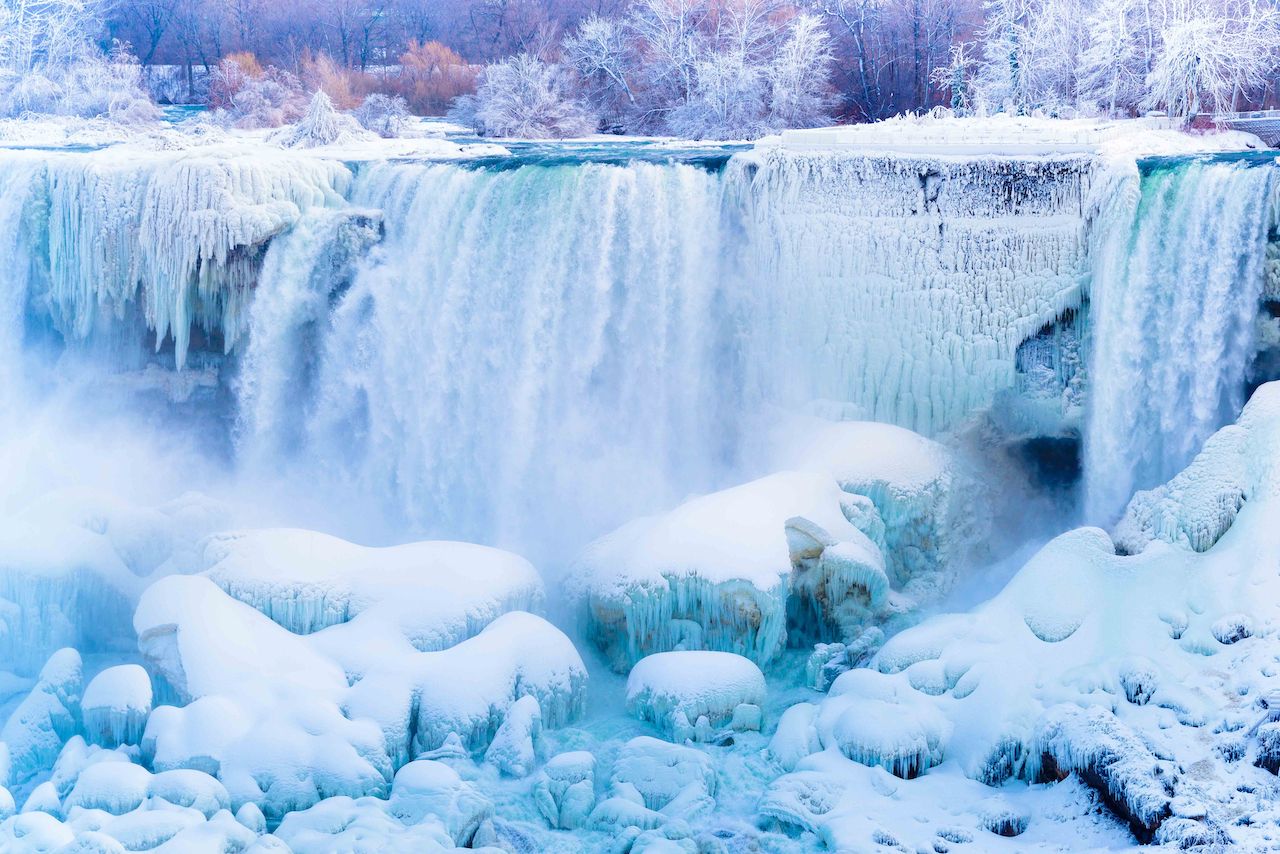
Photo: Photomanz/Shutterstock
Thirty million people descend upon Niagara Falls each year, but in winter, the crowds disperse. Draining Lake Erie into Lake Ontario, the falls — technically a set of three — are one of the most powerful on the continent, with six million cubic feet of water cresting the cascade every minute. They rarely truly freeze, but they can look like it. While it’s likely that the Maid of the Mist won’t be sailing, two observation decks are open in winter, and free snowshoes are available from the Cave of the Winds Pavilion, providing visitors a unique, fun way to explore the surrounding state park.
3. Spearfish Canyon, South Dakota

Photo: Byron Banasiak/Shutterstock

Photo: Byron Banasiak/Shutterstock
In the Badlands of South Dakota, Spearfish Canyon’s 1,000-foot walls tower over one of the country’s most scenic drives. The 19-mile Spearfish Canyon Scenic Byway (Hwy 14A) winds along these epic limestone palisades, by several splashy waterfalls, and connects multiple side canyons great for hiking and biking in the warmer months. In winter, even sparse waterfalls freeze into gorgeous icy displays, and the dense forest lights up in a scene out of a Christmas card. Definitely consider snowshoeing to Roughlock Falls, and Little Spearfish Falls is worth grabbing your camera for, too.
4. Grand Prismatic Spring, Yellowstone

Photo: TRphotos/Shutterstock
Yellowstone’s winter crowds usually number around two percent of their summer size. For those who have been in the high season, seeing the park in winter without hordes of tourists verges on the hard-to-believe. With its ultra-intense colors and extreme heat juxtaposed against cold, cold snow, Grand Prismatic Spring seems even more alien in this landscape, a rainbow giant lost in a sea of white. In winter, you’ll need a snowmobile or snowcoach tour to access Midway Basin and see this spectacle — and it’s totally worth it.
5. Multnomah Falls, Oregon
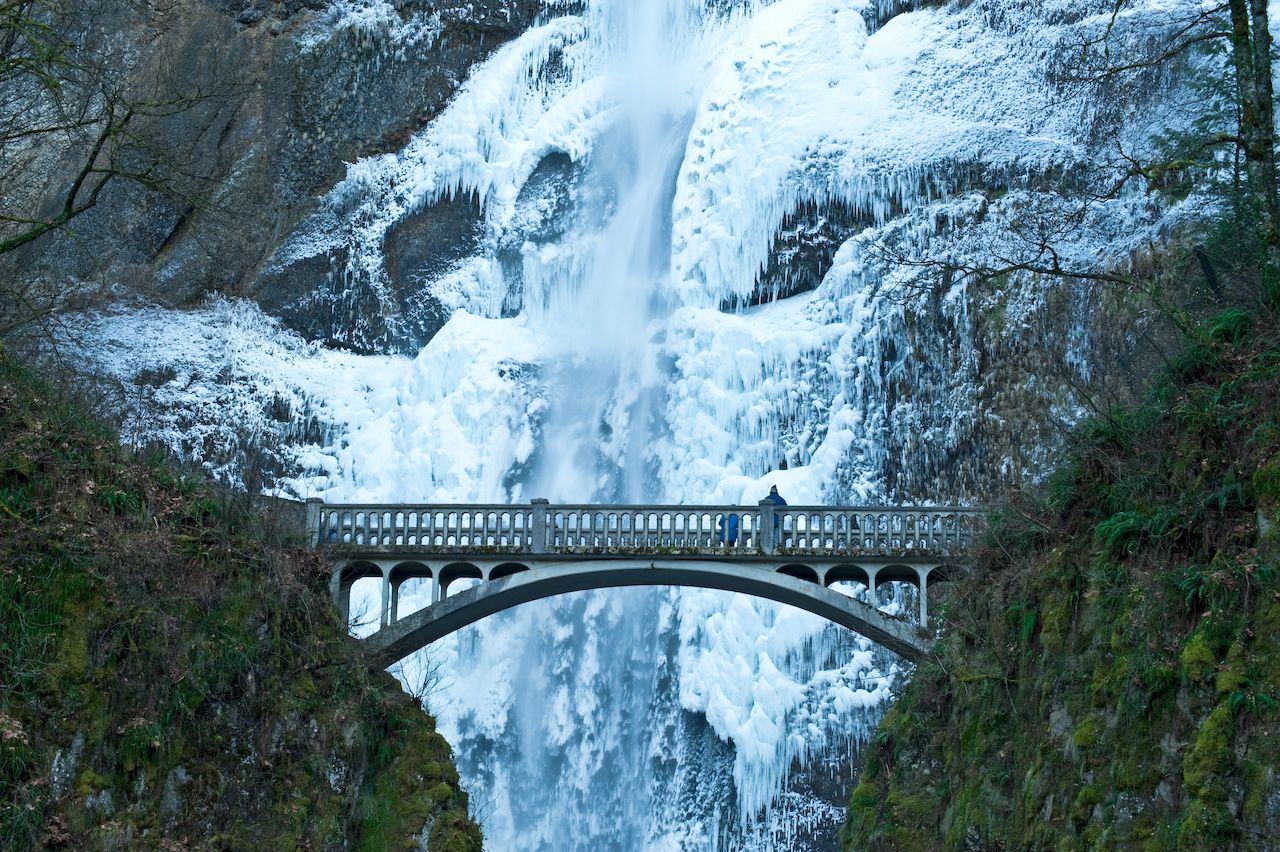
Photo: Robert Crum/Shutterstock
Multnomah Falls cascades down a total of 620 feet into the Columbia River Gorge National Scenic Area. The Fern-Gully-meets-Ice-Age splendor of viewing the frozen falls from the pedestrian bridge is unique to Multnomah because of, well, the bridge. It’s situated above the lower fall and about eye-level with the base of the upper fall, allowing you to gaze up 542 feet to the top while simultaneously observing what a waterfall looks like just as it passes over the ledge and suspends itself in time. Good luck avoiding whiplash at this one.
6. Crater Lake National Park, Oregon
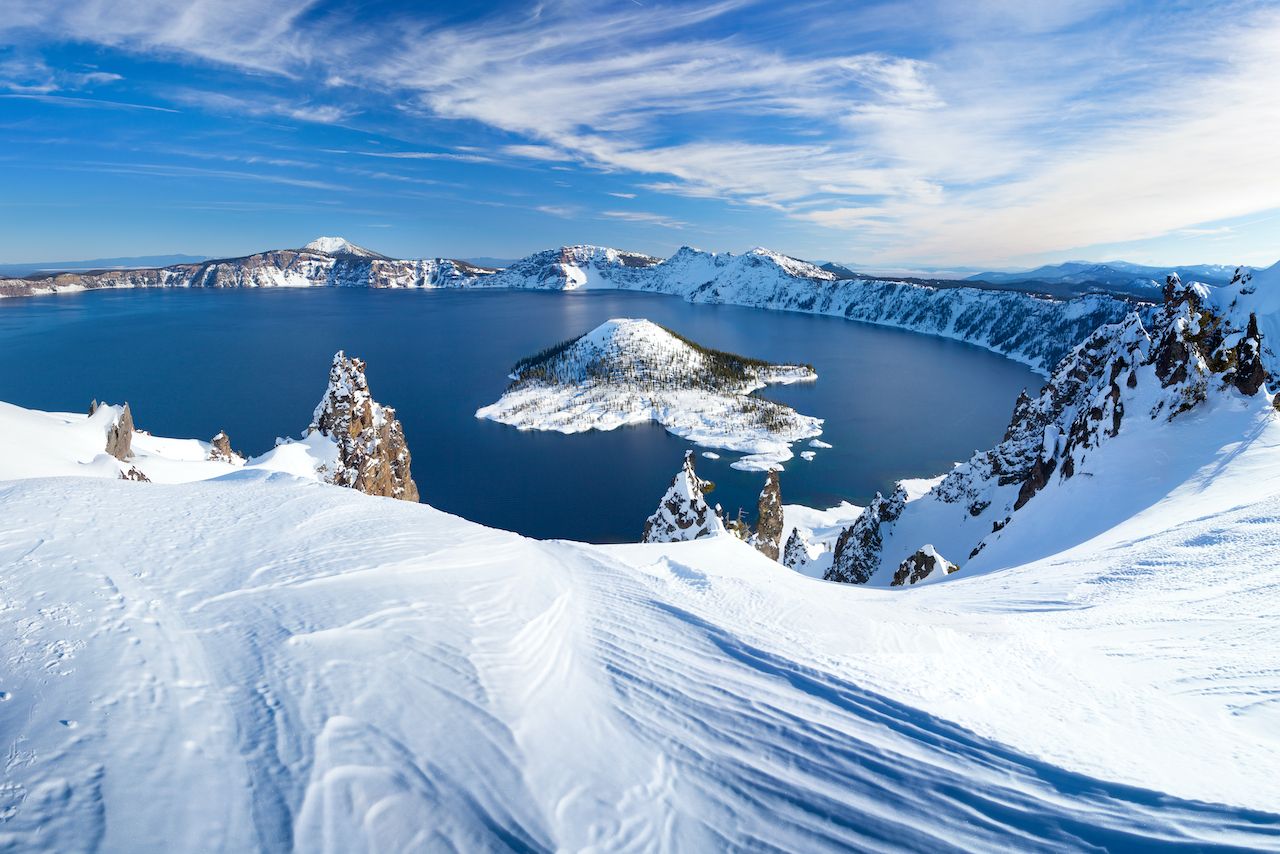
Photo: Matthew Connolly/Shutterstock
In winter (roughly November to May, though sometimes earlier), Crater Lake National Park’s Rim Drive is closed, as is Crater Lake Lodge. Crater Lake, however, is wide open for snowshoers, skiers, hikers, backcountry campers, and anyone looking for a little peace and quiet — for free. Forty-four feet of snow fall on the park roughly every year, and the west and south entrances remain open for access and parking. Cross-country ski the rim, attend a ranger-led snowshoe walk, or try sledding the open meadow south of Crater Lake Lodge.
7. Minnehaha Falls, Minnesota
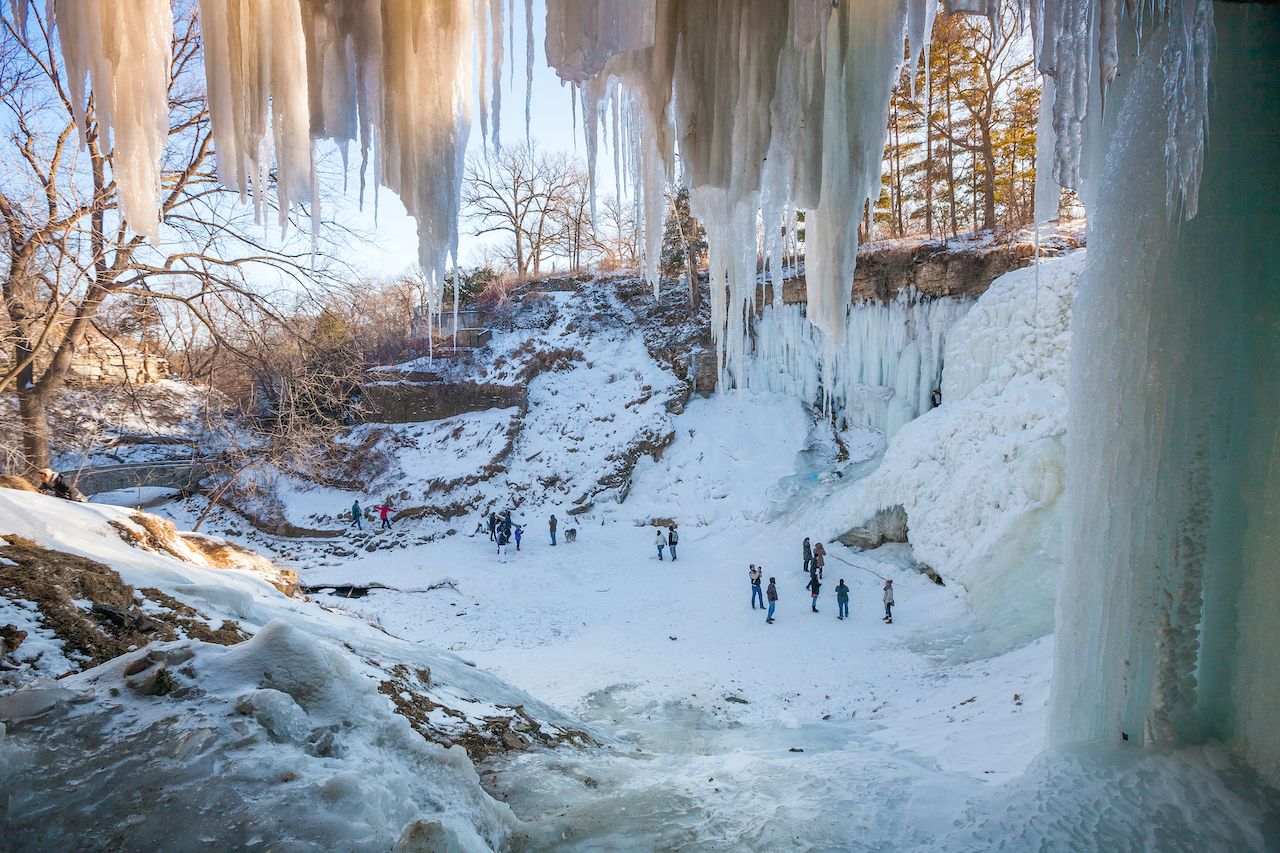
Photo: Anh Luu/Shutterstock
The 53-foot Minnehaha Falls is right in the city of Minneapolis, the center point of Minnehaha Regional Park. A 2.1-mile walk gets you to the falls, which regularly freeze in winter, forming a sheet of glacier-blue ice you can walk under and through, like a grotto. The park, which is arguably the best in the city, is free of charge, and also has some beautiful river overlooks and limestone bluffs worth your walk in the snow.
8. Ouray Ice Park, Colorado
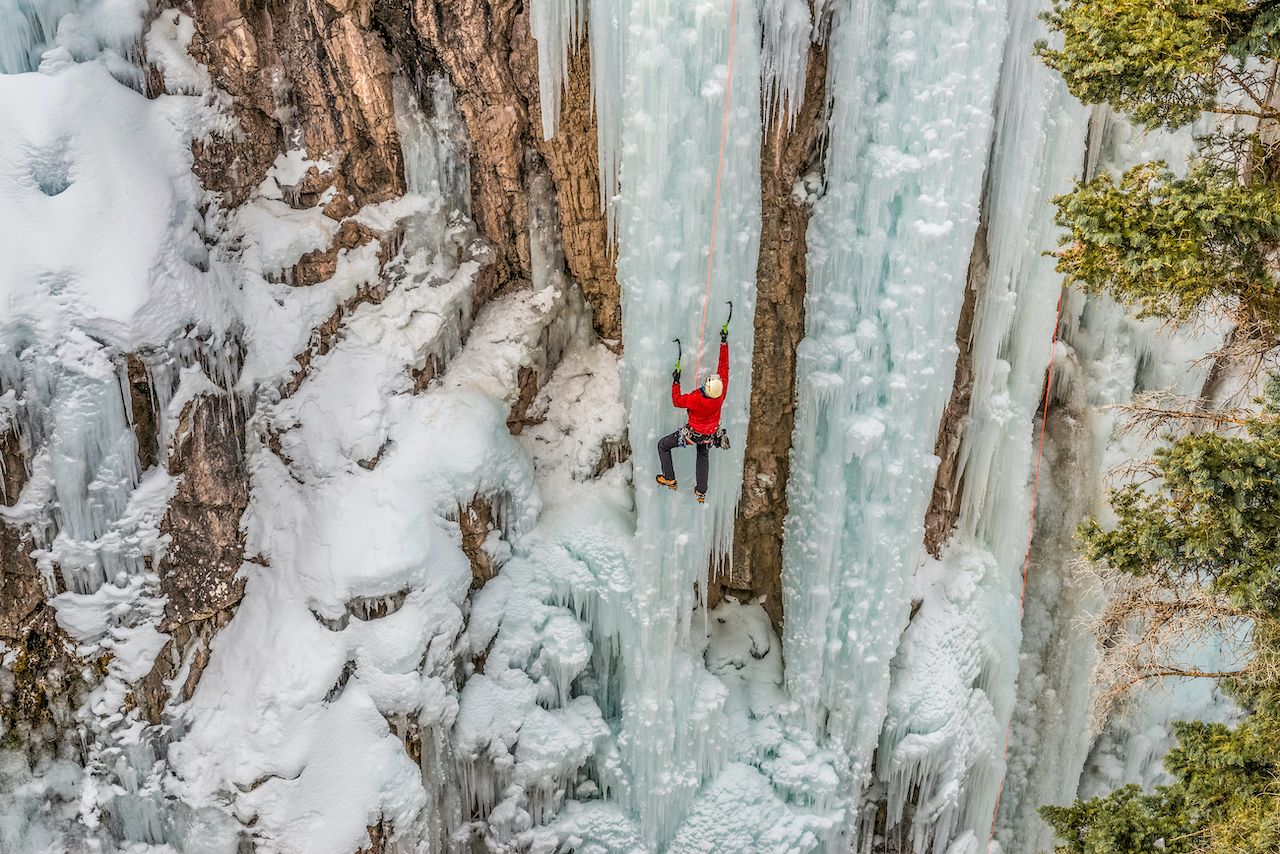
Photo: Danita Delimont/Shutterstock
Man-made waterfalls are seldom worth going out of your way to view. Ouray Ice Park is the exception. This towering vertical wall of ice suspends itself over its gorge like a cloak, beckoning ice climbers from around the world to the “Switzerland of America” each winter. Even if you don’t don a pair of ice picks and ascend the wall of ice yourself, merely viewing its grandeur — the climbers themselves look about the size of ants as they make their way up — is a reminder of how tantalizingly beautiful ice can be.
9. Great Falls Park, Maryland and Virginia

Photo: VIKVAD/Shutterstock
Right on the border of Maryland and Virginia, Great Falls Park, a particularly scenic and rocky stretch of the Potomac, winds for 800 acres just 15 miles away from the Washington Mall. Above the falls, the river is nearly 1,000-feet wide; below the falls, a mere 60 feet. The park is a hotspot for hiking, rock climbing, snowshoeing, scenic-overlook scouting, and general getaway-ing.